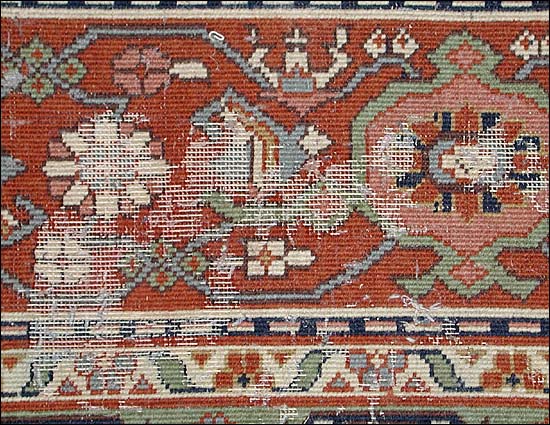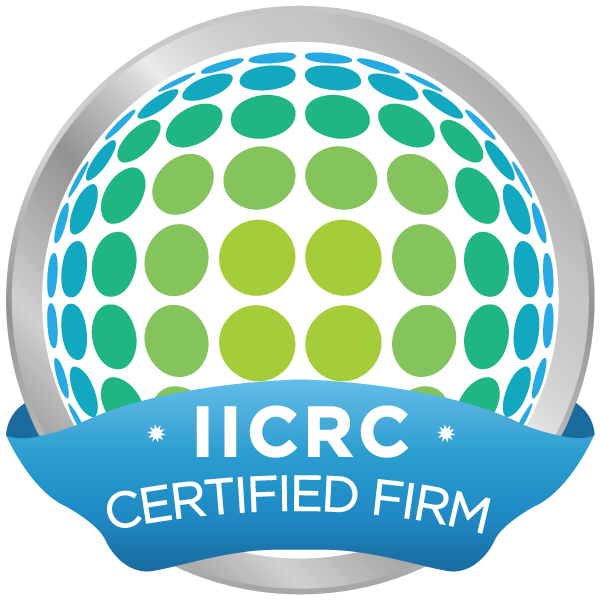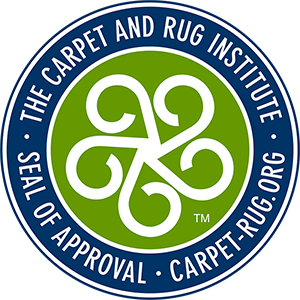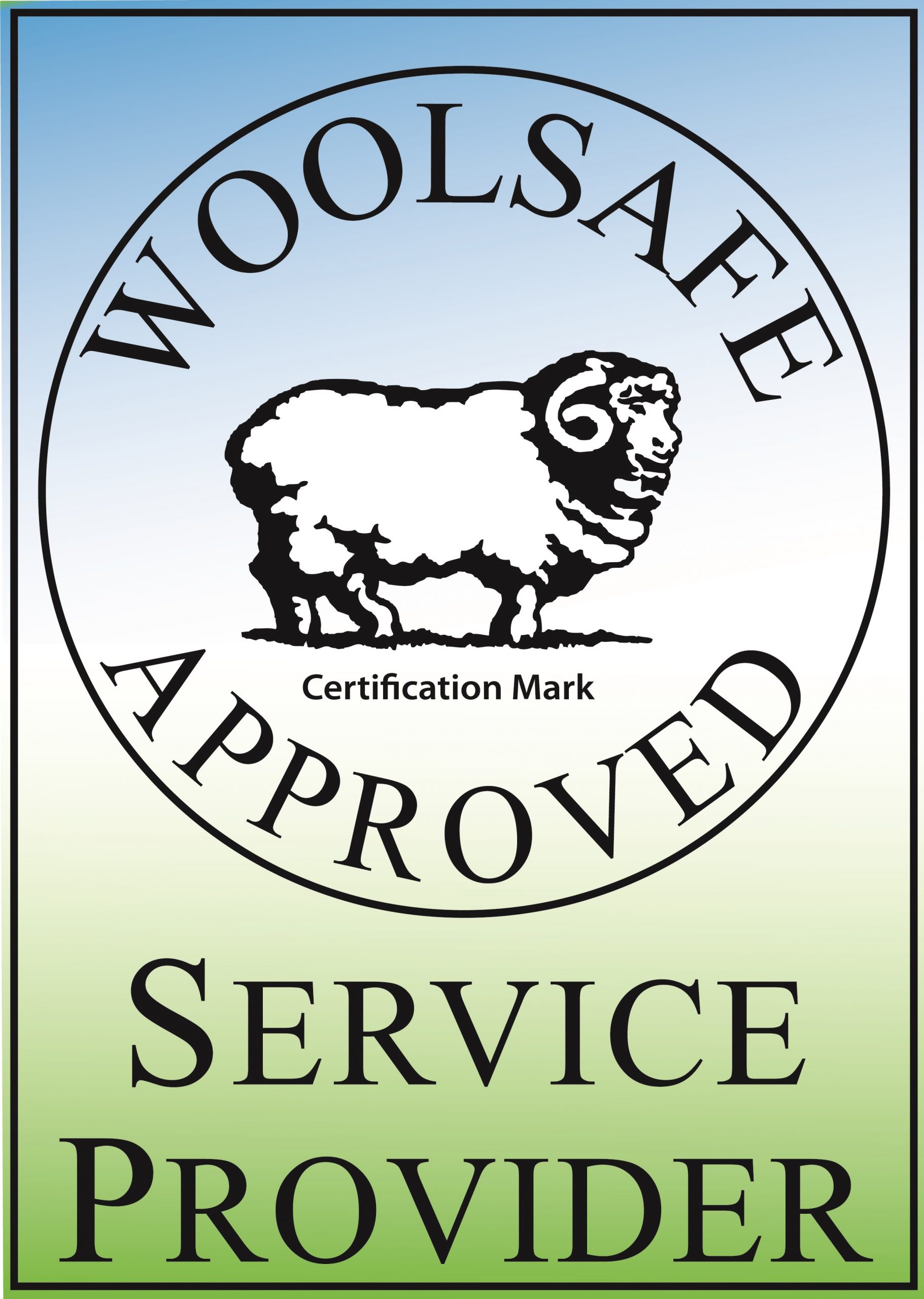
How Moths Destroy Oriental and Persian Rugs
Moths, The Silent Destroyers of Fine Rugs
Imagine discovering that your prized Oriental rug—hand-knotted silk from Isfahan or a century-old Persian Kashan—has tiny bald patches and fragile, frayed fibers. The culprits? Moths.
These seemingly harmless insects are one of the biggest threats to natural fiber rugs. Moth larvae quietly feast on wool, silk, and other organic materials, causing extensive and costly damage. What makes them especially dangerous is that their destruction often goes unnoticed—until it’s too late.
At Oriental Rug Salon, we’ve seen firsthand how quickly moth damage can spread. Our expertise in rug cleaning, restoration, and appraisal helps clients throughout Southwest Florida protect and restore their precious heirlooms before irreversible damage occurs.
Video: How To Identify Moth Damage
Understanding the Moth Threat
Contrary to popular belief, adult moths don’t eat rugs—their larvae do. Female moths lay hundreds of eggs directly on rugs rich in natural fibers. Once hatched, the larvae feed on keratin, a protein found in wool, silk, and animal hair.
These larvae can live for several months, quietly consuming fibers and leaving behind powdery residue and web-like cocoons. The problem intensifies in warm, dark, and undisturbed areas, such as under furniture or rolled-up rugs in storage.
Types of Moths That Attack Rugs
Two primary species are responsible for rug damage:
- Prefers dark, humid environments.
- Leaves irregular holes in rugs and fabrics.
- Larvae are creamy-white with a dark head.
- Builds a silken case around itself while feeding.
- The larvae carry this “sleeping bag” wherever they go.
- Leaves trails of destruction across the rug’s surface.
Both species can cause severe fiber loss in Oriental and Persian rugs if not addressed promptly.
Why Wool Rugs Attract Moths
Wool is a moth’s favorite meal because it’s high in keratin, a nutrient-rich protein found in animal fibers. Rugs made of wool, silk, or a wool-silk blend are particularly vulnerable.
Moths are drawn to rugs that are:
- Soiled with food particles or pet hair
- Stored in dark, undisturbed areas
- Covered by furniture (reducing airflow and light)
- Not regularly cleaned or inspected
Even the finest hand-knotted rug can become a moth buffet if neglected for long periods.
How Moths Damage Oriental and Persian Rugs
The destruction occurs silently and gradually. Larvae feed on the base of the fibers, often from the back of the rug upward, which makes damage difficult to notice early on.
The stages of rug damage include:
- Egg Stage: Female moths lay up to 300 eggs in hidden rug fibers.
- Larval Stage: Eggs hatch into larvae that feed aggressively on natural fibers.
- Pupal Stage: Larvae spin cocoons within the rug’s fibers.
- Adult Stage: Adults emerge, mate, and restart the cycle.
A single generation can destroy square feet of rug pile within weeks.
Signs of Moth Infestation
Detecting moth damage early can save your rug from permanent loss. Look for:
- Small bare patches or threadbare spots
- Powdery residue (moth droppings) beneath or around the rug
- Silken tubes or cocoons in rug fibers
- Adult moths flying nearby or on window sills
- Weak or brittle fibers when touched
If you notice these symptoms, it’s time for a professional inspection and treatment.
Common Myths About Moth Damage
There are several misconceptions about moth infestations that can lead to bigger problems. Let’s clear them up:
Myth 1: “If I don’t see moths, my rug is safe.”
False. Moths lay eggs deep within fibers, often out of sight.
Myth 2: “Synthetic rugs can’t get moths.”
Mostly true, but rugs with even partial wool or cotton backing can attract larvae.
Myth 3: “Cedar blocks will keep moths away.”
Only temporarily. Cedar loses its potency quickly and does not kill existing larvae.
Myth 4: “Vacuuming once a month is enough.”
Infrequent vacuuming, especially under furniture, allows larvae to thrive unnoticed.
Preventing Moth Infestations
The best defense against moths is routine maintenance and vigilance. Here’s what we recommend:
- Regular Cleaning
Have your rugs professionally cleaned every 12–18 months.
Vacuum both sides regularly, especially under furniture.
- Proper Airflow and Lighting
Moths hate light and air movement. Rotate your rugs and occasionally expose them to sunlight.
- Inspection and Grooming
Check for larvae or webbing every few months.
Brush your rug gently to loosen and remove hidden eggs.
- Rug Padding and Rotation
Use quality rug pads to promote airflow.
Rotate rugs to ensure even exposure and prevent dark, stagnant areas.
How to Treat a Moth-Infested Rug
If you suspect moths, do not vacuum or shake the rug aggressively—you risk spreading eggs. Instead, follow these steps:
- Isolate the Rug: Move it away from other textiles and furniture.
- Vacuum Carefully: Use a vacuum with a HEPA filter on both sides.
- Freeze Treatment (for smaller rugs): Moths can’t survive freezing temperatures.
- Call Professionals: Contact Oriental Rug Salon for inspection and treatment.
Our certified experts perform comprehensive moth eradication, including cleaning, decontamination, and restoration of damaged areas.
Why Professional Cleaning Is Essential
Even with regular care, only professional rug cleaning can eliminate deep-seated larvae and prevent further infestations.
At Oriental Rug Salon, our process includes:
- Detailed inspection under UV and magnification
- Dusting and sediment removal using specialized vibration technology
- pH-balanced cleaning with WoolSafe-approved products
- Centrifugal water extraction for complete drying
- Fiber grooming and conditioning to restore softness and luster
Our team’s expertise ensures no harm to dyes, fringes, or fibers—only a refreshed, moth-free rug.
Inside the Rug Restoration Process
Severe moth damage can cause holes, unraveling, and foundation exposure. Oriental Rug Salon’s restoration artisans specialize in:
- Hand-repairing holes and reweaving missing areas
- Restoring fringe and edge bindings
- Color matching and re-dyeing faded fibers
- Structural reinforcement for long-term protection
Our goal is to preserve both the beauty and value of your Oriental or Persian rug.
The Role of Proper Storage
If your rug won’t be displayed for a while, proper storage is critical to prevent moth infestations.
Storage Tips:
- Clean and dry rugs before storage.
- Roll (don’t fold) rugs with the pile facing inward.
- Use acid-free paper or cotton sheets for wrapping.
- Avoid plastic covers—they trap moisture.
- Store in cool, dry, well-lit areas.
For long-term storage, Oriental Rug Salon offers professional moth-proofing treatments and climate-controlled facilities.
How Oriental Rug Salon Can Help
At Oriental Rug Salon, we combine science, artistry, and experience to safeguard your rugs from moth damage and other threats.
Our credentials include:
- Certified Partner with the Institute of Inspection, Cleaning, and Restoration Certification (IICRC)
- Member of the International Carpet & Rug Institute (CRI)
- WoolSafe Approved Service Provider
We proudly serve Lee, Collier, Charlotte, and Sarasota Counties with:
- Free pick-up and delivery (for most area rugs)
- Rug cleaning, restoration, and appraisal
- Moth and pest treatment
- Protective fiber sealing
Visit Us Online: OrientalRugSalon.com
Call Us: 239-424-8171 for more information on our services
Like Us On Facebook: Facebook
The Value of Appraisal and Documentation
Moth damage doesn’t just affect appearance—it reduces a rug’s value and insurability. That’s why appraisals are crucial.
Oriental Rug Salon provides professional rug appraisals that document:
- Origin and materials
- Age and craftsmanship
- Condition and current market value
Protect Your Rugs Before Moths Make It Too Late
Moth damage can transform a family heirloom into a costly restoration project within months. But with early detection, proper care, and expert intervention, your Oriental or Persian rug can continue to bring beauty and history into your home for generations.
Don’t wait until you see holes—schedule a professional rug inspection and cleaning with Oriental Rug Salon today. We’ll help protect your investment and restore your rug’s timeless elegance.
FAQs
- Can moths destroy silk rugs as well as wool ones?
Yes, though less common, moth larvae can damage silk fibers since they also contain protein-based material.
- How often should I have my rug cleaned to prevent moths?
Professional cleaning every 12–18 months keeps rugs free of organic debris that attract moths.
- Can I use mothballs to protect my rugs?
We do not recommend mothballs—they release harmful fumes and are only mildly effective.
- What if my rug already has visible moth holes?
Contact Oriental Rug Salon immediately. Our artisans can repair damaged areas through hand-weaving and restoration.
- Do synthetic rugs need moth protection?
Not typically, but blended or backed rugs containing natural fibers can still attract larvae.



